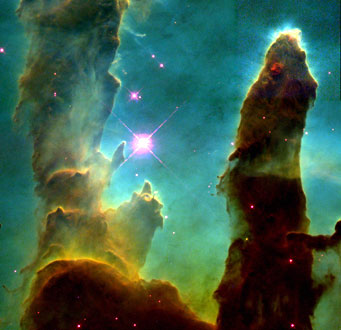Nebulae and galaxies invariably look like shapeless, colorless blobs in my 6-inch telescope, a far cry from their spectacular appearance in photographs. If I buy a 12- or 14-inch scope, will I see a dramatic improvement?

Would that it were so! A larger telescope will better reveal the shapes of nebulae and galaxies, and it will show you many more such objects than your 6-inch, but it won’t turn dim grays into radiant blues and reds. For example, I can make out the Whirlpool Galaxy’s spiral arms in my 12-inch Schmidt-Cassegrain, but I see no hint of the red gas clouds and blue star clusters that speckle the arms in photos. Yet I can see those colors in images I shoot through the same instrument.
There’s a big difference between visual observing and astrophotography. The human eye-brain system, which isn’t very sensitive to dim light, has an effective “exposure time” of about 1/10 second. In contrast, the colorful photos of deep-sky objects gracing Sky & Telescope's pages and some manufacturers’ telescope boxes involve exposures lasting minutes or even hours. It takes that long to accumulate enough starlight to build up a pretty color picture on film or an electronic sensor.
The advent of inexpensive CCD cameras makes it easier than ever for amateurs to shoot colorful images of deep-sky objects with 6-inch and smaller telescopes. So if your goal is to capture the night sky’s spectacular colors, don’t give in to aperture envy — get yourself a camera instead.
— Richard Tresch Fienberg
 0
0







Comments
You must be logged in to post a comment.